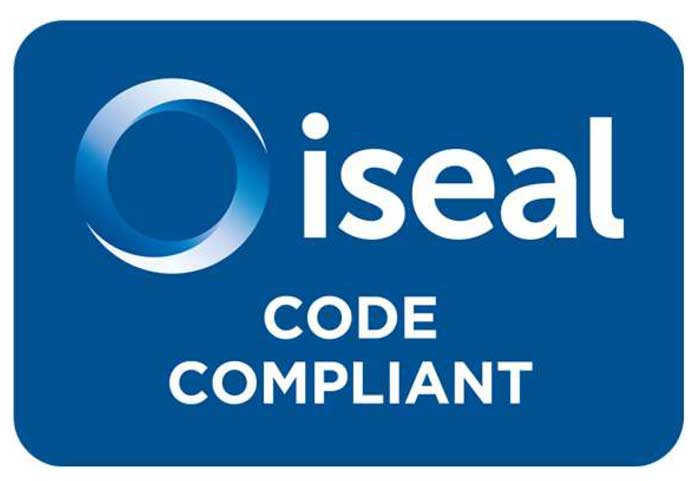ASI engagement in global efforts to define 1.5 degree-aligned GHG emissions reduction pathway methodology
Work continues with leading global initiatives and capacity has been strengthened in the Standards Committee.
26 October 2022
A 1.5 degree scenario, developed by the International Aluminium Institute (IAI), is available for the aluminium sector, but there is a need to develop a science-based method for Entity-level GHG Emissions Reduction Pathways consistent with this sectoral scenario and applicable to a heterogeneous cohort of Entities present all along the value chain. In particular, given Criterion 5.3 includes all direct and indirect emissions and applies to all certifying Entities along the value chain, the treatment of scope 3 emissions is a challenge, as is the environmental burden allocated to scrap.
The IAI 1.5 degree scenario, broadly aligned with the IEA Net Zero Scenario and a top-down articulation of what the sector needs to achieve collectively to remain within planetary boundaries, has recently been further developed and built upon by Mission Possible Partnership (MPP) in its Aluminium Transition Strategy. This ASI-endorsed approach is an ambitious but achievable plan for the sector as a whole, but does not deliver the Entity level pathways methodology that 5.3a requires for certifying Entities to use.
While the bulk of aluminium industry emissions (and emissions reduction potential) lies in the primary value chain, action to increase post-consumer scrap collection and value recovery/retention (through improved sorting and design for recycling among other initiatives) and to reduce pre-consumer scrap generation are important elements in delivering a 1.5 degree aligned aluminium sector.
Some key expectations of any method are that it should:
- Be applicable to all ASI certifying Entities (not just those involved in primary production);
- Be science-based;
- Be broadly aligned with the IAI/MPP/IEA sectoral 1.5 degree scenarios;
- Address all direct and indirect GHG emissions.
With Emma Watson, Head of Standards with Science Based Targets Initiative, now sitting as an ASI Standards Committee civil society representative, we have added strength to our ability to drive alignment with climate science and harmonization with other initiatives and sectors.
ASI (and a number of its partners and Members) has thus been active in a number of other fora over the past year to explore how a method might be defined, in particular for assets downstream of the casthouse, bringing together primary and recycled inputs.
Aluminium Climate-Aligned Finance Initiative
As a Member of the Expert Group of the Aluminum Climate-Aligned Finance (CAF) initiative (established by the Rocky Mountain Institute), the signatories of which are banks including Citi, ING, and Société Générale, ASI has aimed to assist in the refinement of proposed methods for financial institutions to benchmark/assess targets of aluminium companies/assets to finance decarbonisation in line with 1.5 degrees. The results of the Climate Aligned Finance Working group are due to be released for consultation in December 2022, with a target for publication of Q2 2023. While well aligned with the sectoral roadmap, it is likely that the method will focus on primary and recycling but not post-casthouse routes and on delivering portfolio-wide methods for lenders, rather than a method that might be useable for Entity pathway setting. Having said that, it will be a useful approach to link-up sector wide emissions with financing for the processes requiring the deepest decarbonisation. ASI’s role in sustainability linked finance is explored here and with Andrew Wood recently joining the Secretariat as Director of Sustainable Investment and Legal, ASI is growing this important area of engagement.
Horizon Zero Aluminium Sector Working Group
Another initiative managed by the Rocky Mountain Institute is the Horizon Zero Aluminium Sector Working Group that seeks to create “a GHG accounting framework to measure emissions at the product level as well as the technical architecture to effectively track emissions as they move through the value chain.” ASI is a Working Group Member, again with an aim to harmonize and ensure 1.5 degree alignment (which appears to be the case). With an objective to develop a harmonized aluminium sectoral GHG accounting guidance with a calculation tool for product- and asset-level emissions and ‘Implementation Guidance’ to provide insights to buyers to drive decarbonization, this initiative at present looks like the most likely to deliver something that might be used as an Entity-level method. With public consultation early in January, we are likely to see guidance published in Q2 2023.
First Movers Coalition
One further area of engagement has been with the First Movers Coalition, where ASI had technical input to the target set for demand creation for low carbon aluminium. For Entities beyond the casthouse, purchasing strategies will play a significant role in reducing “embedded” (scope 3, category 1) emissions, which make up the bulk of emissions inventory in this part of the value chain. Clearly in a 1.5 degree aligned sector, however, it is not the action of first movers alone which will achieve the desired emission reduction outcome. Thus, the need for science-based emissions pathways from all Performance Standard V3 certifying Entities, no matter where they sit on the value chain.
ASI continues to be active in all these discussions and, mindful of the need for a method for Performance Standard V3 certifying entities (in particular, those with downstream assets), the Standards Committee will review the outcomes for inclusion in ASI Guidance updates, likely in the latter half of 2023.
Read more about ASI’s work on climate change.
SHARE THIS ARTICLE


